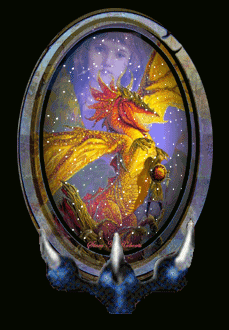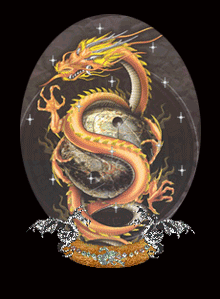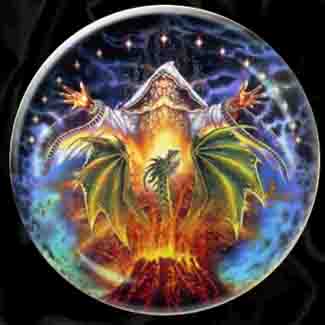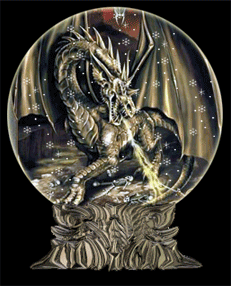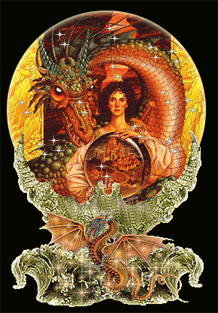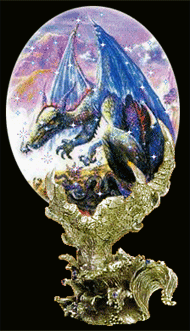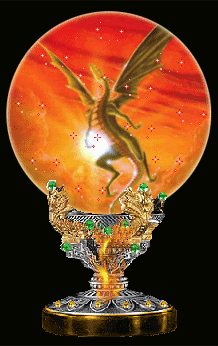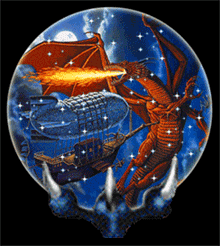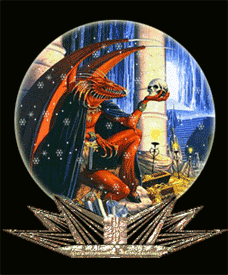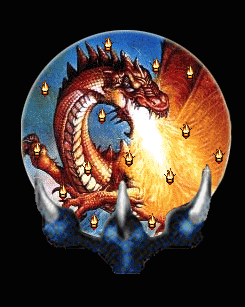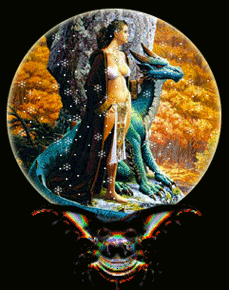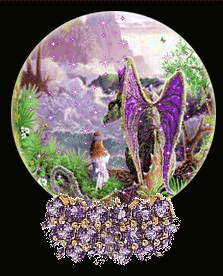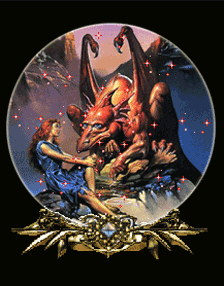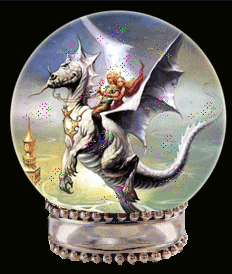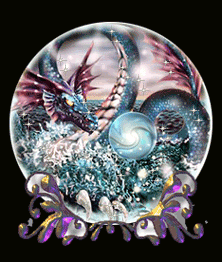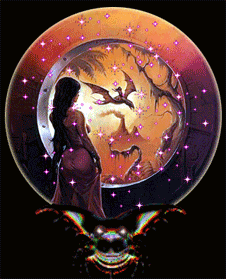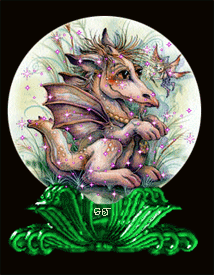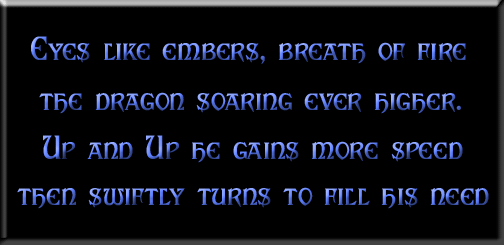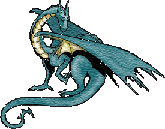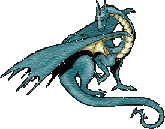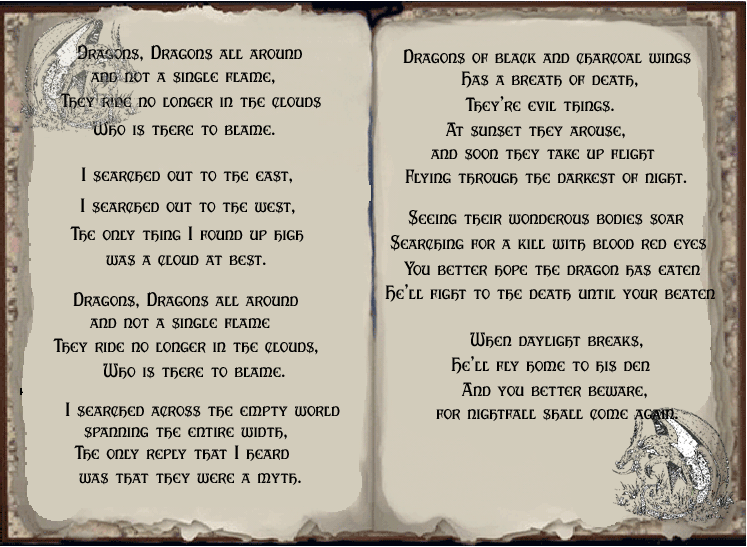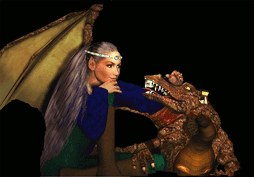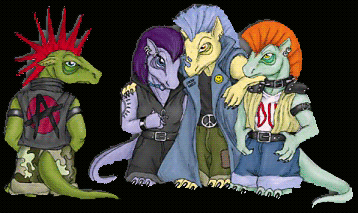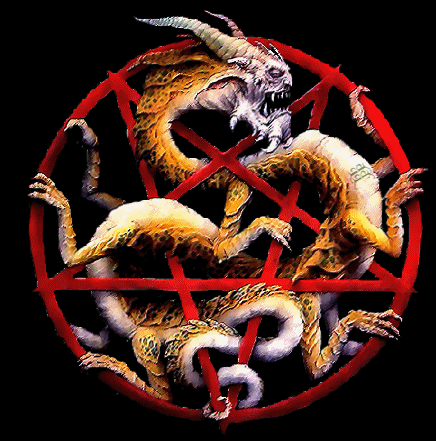It is accepted fact that very little is known about dragons. There are a number of reasons for this, dragons generally are a reclusive species and tend to remain in the quiet corners of the world where they can live peacefully and unmolested. Unfortunately mankind has hunted the Dragon since the time of the ancient Eqyptians, until their numbers were only a tiny fraction of what they once were, and Dragons were never a plentiful species.
DEEP SEA DRAGON
Found in all the seas of the worls. The largest of all the dragons. There are several recognizable subspecies.
THE ATLANTIC DRAGON
Found in the Atlantic and Indian Ocean. These can reach up to 35 metres in length and are generally green/grey in colouring. Several reliable sightings have occured in the past decade, prompting speculation that this species still exists although in vastly reduced numbers.
THE PACIFIC SEA DRAGON
Found in the Pacific Ocean and the eastern edge of the Indian Ocean, but rarely enter Arctic or Antartic waters. The Pacific Sea Dragon is generally slightly larger than their Atlantic cousins, occasionally reaching over 40 metres in length. The Pacific Dragon is generally blue in colour. Highly probable that this species still exists as well.
THE MEDITERRANEAN SEA DRAGON
Unfortunately this species of dragon has been assumed extinct for over 2000 years, probabely hunted to extinction by early fisherman. What little evidence that exists about this species suggests that this dragon was much smaller than it's ocean going relatives, being only 5-10 metres in length. The early Romans traded heavily in Sea Dragon flesh, considered to be the greatest delicacy available. Believed extinct.
WATER WYRM
A species of the Deep Sea Dragon which lives solely in fresh water, usually in European and North American waters. Generally smaller than it's salt water cousins, the Water Wyrm could still grow to enormous lenghts, sometimes 20-25 metres in length, although 10 metres is the average length. There have been no reliable sightings of a Water Wyrm anywhere in the world since the middle of the last century. Believed extinct.
EUCALYPTUS DRAGON
Found in the eucalyptus forests of Australia and the jungles of New Guinea. The Eucalyptus Dragon lives primarily in forest regions and is one of the few dragons who can truly fly. This dragon eats the leaves of trees as well as a steady diet of kangaroos, koalas and emus. It is not a large dragon measuring on 8-10 metres from head to tail. It is usually green in colour and this camouflage can be very effective.
RAINBOW SERPENT
It is possible that the Rainbow Serpent of aboriginal mythology was originally a gigantic species of the Eucalyptus Dragon. The Rainbow was probabely extremely large and recent research has shown that if it did actually exist it may well have been larger than the Great Sea Dragon, currently ranked as the largest of all Dragons. However as yet there is no solid evidence to support this conjecture.
GREAT CAVE WYRM
Found in the mountainous areas of Asia as far west as the Caucasus. A huge burrowing Wyrm that rarely leaves the security of the darkness. Very little is known of this dragon since it rarely sees the light of day.
GREAT WYRM
The most intelligent and the largest of the terrestrial dragons. They have the ability to fly and breathe fire, the only dragon that can do so. It is probable that St. George fought a Great Wyrm. The Great Wyrm had one enormous weakness that contributed greatly to it's demise. It was attracted to bright shiny objects and would often hoard hugh piles of metal armour,glass and treasure. It is mainly for the latter that this dragon had been heavily hunted during the Middle ages.
RED DESERT DRAGON
The Red Desert Dragon is a sub-species of the Great Sand Dragon and lives in the sands of central and western Australia. It does not possess wings, but rather it lives in the sand, burrowing deep to search for water. This dragon is extremely rare and has only been reliably sighted twice in this century.
GREAT SAND DRAGON
Found in the most arid of the world's deserts. There are numerous sub-species all over the world, in the Sahara, the deserts of central Australia, the Rub Al Kali, the deserts of the United States and Mexico. The last sighting of a Great Sand Dragon was in 1993 in the Mojave Desert.
NIGHT DRAGON
The only truly nocturnal dragon. The Night Dragon has perhaps the widest area of habitation of any dragon. It exists on all continents except the Antartic. It also does not exist on mainland Australia but can be found in Tasmania. The Night Dragon is one of the smallest of dragons, rarely exceeding 2 metres in length.
FROST DRAGON
Perhaps the only Dragon that prefers a cold environment. It lives in northern Europe and Asia, Greenland and the Northwest Territories of Canada. It is possible that some Frost Dragons live on the island of Iceland but there hasn't been a reliable sighting there since the late 1950's.
FIRE DRAGON
A most unusual and extremely rare species of dragon, this creature lives in the firery belly of the world's volcanos. Almost nothing is known of the Fire Dragon except that they are extremely large, up to 30 metres,
and live in the most inhospitable of environments. It is probable they live in the great caverns that exist in the base of most volcanos, breathing the highly noxious fumes that swirl in the depths .
LESSER RAINFOREST DRAGON
Found only in the jungles of South East Asia, the lesser Rainforest Dragon was once common but in the last 200 years their numbers have plummeted. These small, 1 metre, and extremely colourful dragons have not been sighted for the last 15 years and it is believed they are now extinct.
|
